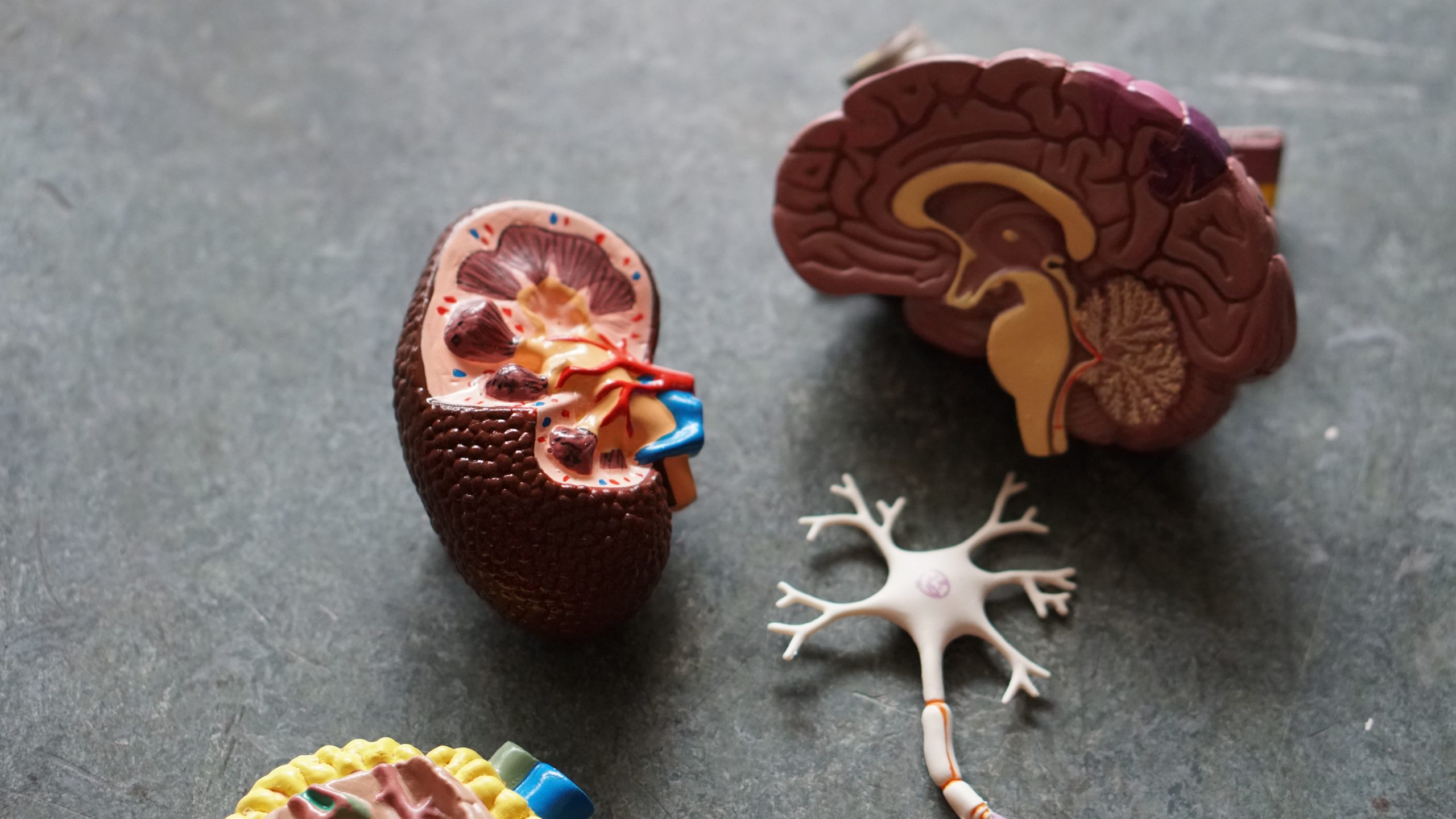This system refers to the entire gastrointestinal tract, beginning with the mouth, progressing to the stomach, then the small bowel, large bowel and finally the anus. Like many things, the correct functioning of the gastrointestinal tract does benefit from a healthy general lifestyle which includes regular exercise, a balanced diet and drinking plenty of water. Despite that, one thing is very common in the elderly – constipation. We will get to that later. Firstly, lets start higher up.
Gastro-oesophageal Reflux Disease (GORD)
This is very common disorder. The main question to ask is – why?
Normally the stomach has acid and that acid is not meant to move back up towards your mouth. Acid from the stomach is not meant to be in the gullet (oesophagus). However, for various reasons, stomach acid can enter the oesophagus and when it does, it causes a variety of symptoms including pain and nausea.
One reason why elderly people get reflux is because the valve system which is present between the stomach and oesophagus becomes dysfunctional. This often can be associated with the sliding of a portion of the stomach upwards leading to a condition called a “hiatus hernia”. If this problem is great enough, in particular if your reflux includes a significant volume of gastric contents being regurgitated at times, it may warrant surgery. In this procedure, a portion of the stomach is wrapped around the oesophagus, in an attempt to re-create a valve. The size of hiatus hernia can be assessed by various means including a “barium swallow” whereby a drink with radio-opaque dye is drunk, and xrays taken to track the passage of that fluid consumed.
Apart from stomach acid entering the oesophagus, the very presence of too much acid in the stomach itself can cause pain. The actual lining of the stomach can get inflamed. This situation is referred to as gastritis. Sustained high acid levels and gastritis can go on to cause a stomach ulcer. In turn, a stomach ulcer left unchecked can continue to erode and eventually perforate, meaning that there is now a hole in the stomach wall and the contents of the stomach are leaking into the abdominal cavity. This is a very dangerous situation.
High acid levels in the stomach can also contribute to GORD itself. It is worthwhile mentioning also that there is a bacteria called helicobacter pylori that does live in the stomach and causes hypersecretion of acid. Therefore, the first thing to check if you have high stomach acid is – do you have helicobacter pylori (called h.pylori for short)? This can be tested for by a simple and harmless breath test. It’s really very sensible to check for h.pylori if you have GORD or gastritis. Because, if you do have h.pylori, it can be treated. That treatment comprises antibiotics and a medication that suppresses your stomach’s acid secretion. These are sometimes sold in combination, specifically as a pack for h.pylori.
One word of caution is that medications used to supress acid such as esomeprazole (Nexium) and pantoprazole (Somac) are often overused and although daily use can be required for people, many others benefit from using these medications only when they have symptoms. This is perfectly reasonable and sensible. There are some risks associated with the use of anti-acid medications. These include:
- Low B12. Drugs like Nexium decrease your B12 level. There are some patients who get put on B12 replacement therapy, when the actual cause is their anti-acid medication. So if ever you are found to have low B12 check that it’s not caused by these such medications before going on replacement B12 therapy.
- Immunosuppression – Nexium can cause your immune system to be supressed very quickly. This can be picked up in a blood test as a reduced white (immune) cell count. Note that you may not realise that your white cell count has reduced. Therefore, about 4 weeks after starting an anti-acid medication such as Nexium, it may be worthwhile having a blood test to check that your white cell count is ok.
- Thin bones. Long term use of anti-acid medications can cause your bones to thin, a condition called osteoporosis.
So all in all, if you need to use anti-acid medications, then try to use them every now and then, rather than all the time. And, before you start using them, test yourself for h.pylori. If you have severe symptoms or a stomach ulcer though, then you need you use medications at least daily for 8 weeks.
Silent reflux. This is the related condition to GORD in which case stomach acid makes its way all the way up into a person’s throat, causing them to cough rather than necessarily feel pain. It is worthwhile considering silent reflux as a cause for a chronic cough, and therefore, you could try an anti-acid medication. If the cause for your cough was silent reflux, it should go away!
Diarrhoea
Loose stools can be associated with:
- Diet/ food intolerance
- Infection
- Other chronic diseases including cancer and inflammatory bowel disease
- Overflow diarrhoea as in the case of severe constipation.
We will now consider these sequentially.
Dietary intolerance. If this is your cause of diarrhoea, you may pick up on what foods give you a problem. In this case, you will see a pattern and avoidance of those foods, can fix the problem. Note that your tolerance for food can vary, so that even if you did not have a diarrhoea with a particular type of food in the past, you may suddenly develop a problem with it.
Infection: These can be either viruses, parasites or bacteria. Viral diarrhoea tends to come and go. It usually lasts less than one week. And, though your stool may be runny, you usually don’t get too much associated abdominal pain or fever. Generally, it is self abating. Parasites are less common and can include worms. This is a longer course issue and can cause weight loss, since the parasites feed on your intestinal contents. Apart from this, you may not feel too unwell and the diagnosis of a parasitic cause of your diarrhoea may finally be made by your doctor who requests a sample of your stool for testing by the pathology laboratory. Bacterial diarrhoea can be more severe. Bacteria that infect the bowel, tend to affect the large bowel or colon. These include salmonella. Such bacterial infections are usually passed on from food or faeces. If you have a bacterial cause of diarrhoea, you may get quite unwell with bloody stools, increasing abdominal pain and fever. These symptoms may carry on for weeks and get worse without treatment. In this case, particularly if you notice blood in your stool, you should consult your doctor who will likely send a sample of stool for testing. If a bacteria is found, for example salmonella, you may go on to be prescribed a course of antibiotics as treatment. It’s worthwhile noting that, as previously discussed, taking those antibiotics could worsen your diarrhoea, at least whilst you are on them. In this sense, you will need to decide whether it’s worthwhile taking or not. Indeed, some bacterial infections can be self limiting and resolve spontaneously. However, in general, if your symptoms of infection are severe and protracted enough, it is generally advisable to get treated so as to affirmatively resolve the infection. You may have to consider how you may have contracted any bacterial infection in the first place. If it was thought to be associated with any take away food, then this needs to be reported, so that the origin can be tracked down, and further spread of the disease contained.
Yakult
These days, many pro-biotic supplements and tablets are sold. It’s difficult to imagine taking these forever. However, you can get many of those benefits from yogurt or the classic pro-biotic – Yakult. These additions to your diet can help digestive tract. This is true in particular if you find yourself needing to take antibiotics for any reason. Sometimes antibiotics can lead to loose stools (antibiotic associated diarrhoea). This is because they temporarily wipe out your “good bacteria” in your bowel. In this instance, pro-biotics have been shown to help.
Variation in stool
It is worthwhile mentioning that people’s stools do vary. This can happen for all sorts of reasons – how active you have been, how much water you have drunk, your diet and emotional state for example can all have a bearing on your stool. So some variation is completely natural. I mention this here, because it is true that some elderly people get fixated with their bowel habit almost to the point of it being an obsession. In fact, this is not so uncommon. Beware if you are becoming obsessed with thinking about your bowel habit, and try to avoid doing so. The irony of course being that once you get obsessed with any particular part of your bodily function, be it your bowels or your skill, you end up causing and then perpetuating self-imposed disfunction of that bodily system. That’s the natural tendency.
Constipation
Firstly, let’s define what constipation is. Constipation is difficulty opening one’s bowels because of hardened faeces. The main thing to note here is that constipation is not defined by how often you open your bowels, rather focusing on the stool itself being too hard. This is important to note. People open their bowels more or less frequently. How often, doesn’t matter, as long as the stool is relatively soft and easy to pass.
Constipation can be caused by lifestyle and other illness factors. It’s important to realise that when we talk about constipation, we are talking about a build up of faeces in the large bowel, known as the colon. That build up of stool can be either at the start of the colon, on the right hand side. This area is called the caecum. This is known as faecal loading. Or, the build up can be right at the end of the colon, in our rectum. This is called, faecal impaction. The stool in severe faecal impaction can be rock solid. This is because, as stool passes through the colon, water is progressively reabsorbed from it, and it therefore becomes more solid normally. By the time it gets to the end of the colon, it’s therefore normally more firm, and during constipation, it can become even more so. We’ll return to this concept of faecal loading and faecal impaction later in the treatment section.
Lifestyle:
These are the lifestyle factors which can contribute to constipation:
- Not drinking enough water and subsequent dehydration
- A lack of physical activity.
- A diet low in fibre and in particular the consumption of too much meat
- Repeatedly delaying opening your bowels.
Mental stress
A person’s mental state can also affect their bowel habit. Stress and one’s mood can either contribute to you having constipation or diarrhoea.
Physical illness
- Being wheelchair bound as a physical limitation and cause of being particular sedentary can lead to or exacerbate constipation.
- Thyroid function – hypothyroidism. Low thyroid function can contribute to constipation and
- The rectum can prolapse into the bladder and this can create a “kink” in the rectum as a tube, making it difficult to pass a stool.
Medications: Various medications can lead to constipation, these include:
- Iron tablets. Cause dark stools and constipation
- Pain killers. Drugs which include codeine or other opiates can cause constipation. These include endone (oxycodone), panadeine and panadeine forte.
Treatment:
Bowel retraining
Often, due to our lifestyles, we put off going to the toilet, or just don’t create any real “habits” about opening our bowels. Compare this to kids who more readily may have a “habit” of going to the toilet after a particular meal or time of the day. Your colon does have a general wave of activity that moves through it a few times a day, pushing faeces further down track, ready to pass. This is called the migrating motility complex. After this, you then may get the “urge” to go to the toilet. Still, if you set a time during the day, say after breakfast, to routinely sit on the toilet, you may find that over time, you’ll create a habit where after breakfast, you feel like going to the toilet.
Moving on
Once all the lifestyle factors and illness factors have been attended, causative medications removed or limited, and bowel retraining attempted, if you still have constipation, you may need to consider a laxative or enema. Returning to our discussion at the start of this chapter, this is where it’s important to realise that constipation is a broad term, what you need to know is whether your problem is faecal loading or faecal impaction. If you’re not sure which one it is, you may need to see your doctor and he/she may do a per rectal exam or send you for an abdominal xray to confirm. It is worthwhile the difference, because faecal loading and faecal impaction are treated differently.
Faecal loading is treated with laxatives. Laxatives work in various ways including by stimulating the muscle of the bowel wall to push stool or by drawing water into the stool, to make it softer. When there is excess stool at the start of the tube, on the right, as is the case with faecal loading, this makes sense and should work in theory and practice. Taking laxatives is appropriate.
Faecal impaction by contrast, is a problem right at the end of the colon, low down in your rectum. Laxatives are much less likely to have any effect. Instead, for this problem, you need to use suppositories or enemas. A suppository is a capsule filled with ingredients (for example glycerol) that draws water into the colon, softening the stool and stimulating the area. An enema works in a similar way, but this time, instead of a capsule, it’s a bottle filled with fluid containing salts and various other chemicals. You insert the nozzle of the enema about 10 centimetres into the rectum, and squeeze the fluid into the colon and faeces, hopefully causing the faeces to be passed. If you have faecal impaction, it can be useful to do both. Start with using two glycerol suppositories, then wait half an hour and proceed to using a enema. For faecal impaction, if all else fails, then you may need to see your doctor to have the faeces manually removed.
Note that a person can have both faecal loading and faecal impaction at the same time. In this case, both laxatives, suppositories and enemas can be used.
TIPS:
- Drink lots of water, have fibre in your diet and stay active. These three factors are the basis of creating a reliable bowel habit. Drinking water especially, is often forgotten. A good tip would be to get into the habit, or make it routine to drink a glass of water with a meal. That’s a good start.
- Don’t strain on the toilet. You could make things worse and end up getting haemorrhoids.
- Laxatives: As people age, it becomes more usual for some to rely on daily laxatives, especially in a nursing home. But beware, your body can become a bit too dependent on these things. This is because some laxatives contain ingredients that affect the nerves in your bowel, causing the muscle on the bowel walls to contract and stimulate movement. This is how “sennakot” (part of coloxy and senna) works. Senna, as it is called, therefore is a laxative that your body can get dependent on, to a degree, so use it if you need to now and then, but ideally, not everyday.
- Bowel obstruction. If you’re not opening your bowels at all, and you start to get a distended and painful abdomen then at that point, you may have progressed to having a complete bowel obstruction. This could be from constipation, or any other reason for a blockage including bowel structuring/narrowing, kinking or mass/tumour. In this case, you should see a doctor.
- Overflow diarrhoea. This is the phenomenon when constipation or any other cause of blockage, leads to only watery stool or pure liquid getting passed. The fluid is said to literally “overflow”, bypassing the physical blockage. At this point, you may feel that you’ve in fact got diarrhoea. But it’s actually “overflow diarrhoea” and constipation may still be the cause. Keep this in mind!
- Confusion, delirium and constipation. The elderly are prone to constipation due to increased immobility and tendency to get dehydrated. However, often they don’t know they are constipated. This is true for people with or without dementia. When constipation is substantial though, it can affect a person’s mood, appetite, cause them to feel nausea and ultimately be a cause of confusion or delirium, so think of it during such times.
- Back pain. Remember, constipation can cause back pain. This can be misleading such that a person with back pain due to hidden constipation starts taking pain killers which include constipating substances such as codeine, only making the constipation worse. To avoid this, when someone complains of back pain, think – could it be constipation?
Abdominal pain
Abdominal pain can be caused by many different problems. One main objective when considering abdominal pain though, is to decide whether it’s bad or worrying enough that you should go to hospital to be seen by the surgical team. Essentially, if you’ve got severe abdominal pain, and you don’t know what the cause is, then in general, you should go to hospital.
Common causes in the elderly of abdominal pain:
- This is a common condition and is discussed above. It can cause abdominal pain anywhere really in the abdomen, but particularly the lower abdomen. It can also be the cause of back pain. This is useful to know, since sometimes patients get given constipating pain killers, for back pain, when their problem always was constipation.
- This is inflammation of the bowel wall, usually the large bowel, also called, the colon. The position of the pain can be either the right or left side, but more commonly the left side of the abdomen. Diverticulitis can be caused by increase intra-abdominal pressure, often associated with constipation.
There are other, less common causes as well. These include:
- Inflammatory bowel disease such as Crohn’s and Ulcerative Colitis. Generally, an elderly person would have had this diagnosis earlier in life. These are autoimmune conditions, meaning that the body has incorrectly attacked the bowel wall, causing inflammation and pain. Crohn’s Disease can affect the entire gastrointestinal tract, starting at the mouth, ending at the anus. Ulcerative Colitis, as the name suggests only affects the large bowel. Both can cause severe abdominal pain and PR bleeding.
- Vascular problems. A lack of blood supply to the bowel can cause abdominal pain. This can be due to a general long standing lack of blood to an area of the bowel, rather the same way that blockages to the arteries supplying the heart cause chest pain. Or, from a more sudden blockage to a blood vessel that causes more dramatic pain. In both cases, the pain can once again be associated with PR bleeding.
Tips:
- Remember that an appendicitis can happen at any age, including in older age. This is inflammation of the appendix which is a small appendage on the right side of the bowel, where the small and large bowel meet.
- Sometimes the bowel can twist on itself, especially the colon on the left side. This can be an emergency and is called a sigmoid volvulus. In this case, the abdomen should be fair tender and may be distended. If unsure, the person should be sent to hospital to be properly assessed. Note that sigmoid volvulus happens most readily in people who are bedbound.
- Bowel Cancer. Advancing age is a risk factor for most cancers including bowel cancer. Therefore, keep this in mind, especially if the abdominal pain is accompanied with a change in bowel habit and any bleeding. Feeling the abdomen where it’s sore may reveal a mass with more advanced cased of bowel cancer.
- If someone hasn’t been opening their bowels and their abdomen is distended, they may have a bowel obstruction. This can indeed be painful. This can be a surgical emergency and therefore they should be seen in the emergency department.
- Sometimes, the abdominal pain can be low down and in the middle. In this case, consider that it could actually be an obstructed bladder causing distension of the bladder and abdominal pain from that.
PR bleeding
Bleeding from your bottom can be very disconcerting. There are various causes, however one thing must be said and that is that bowel cancer must always be thought of as a possibility, especially if the cause is not otherwise obvious. Generally, per rectal (PR) bleeding is either bright red or darkened and mixed with stool. If it’s dark and or mixed with stool, it generally symbolises that the source of the bleeding is higher up in the bowel. If it’s bright red, it generally means that the source of the bleeding is the lower bowel or colon. This is of course, unless there is a massive bleed, in which case, even bleeding from the earlier, higher parts of the bowel or stomach, can lead to bright PR bleeding. These are some causes of PR bleeding:
- These are engorged walls low down in rectum near the anus that are filled with blood. It is thought that they help to form a valve, helping to maintain faecal continence. Haemorrhoids located higher up within the rectum are called internal haemorrhoids. Haemorrhoids closer to the anus can be painful and are called external haemorrhoids. Internal haemorrhoids can sometimes fall out of the anus and you can feel them bulging and can be pushed back in. Internal haemorrhoids in particular, can often bleed. The blood tends to be bright red. Internal haemorrhoids themselves tend to be painless.
- As earlier mentioned in the section about abdominal pain, diverticulitis, which is inflammation of the colon, usually caused by increased pressure on the bowel wall, can be associated with PR bleeding. Note that diverticulitis can and commonly causes substantial bleeding. The first line treatment for diverticulitis are antibiotics. This is usually a penicillin in the form of Augmentin Duo Forte 1 capsule, twice a day for 10 days. During a bout of diverticulitis, you should have a soft diet, comprising foods that are not too fibrous. Once the acute flare including any pain or bleeding is resolved, then you can restart a fibrous diet, to avoid constipation. In any event, you should drink lots of water. Some people will know that particular foods set off their diverticulitis. Though this idea hasn’t fully been scientifically validated, this may be true for some people in which case, diet becomes all the more important. In any event, avoiding constipation is important.
- Bowel Cancer. We mention this again here since it’s vital to consider bowel cancer in any discussion about PR bleeding. Episodes of any PR bleeding should ideally be discussed with a doctor and how to best rule out bowel cancer can be discussed. To properly rule out bowel cancer, you’ll need to have a colonoscopy, which is a camera study of your bowel. This is the gold standard of examining whether someone has bowel cancer or not as their cause of PR bleeding. We talk specifically about gastroscopy and colonoscopy to follow.
TIPS:
- If you have a lot of bleeding – get help. If you have significant blood loss, or not sure, then get help. Losing a fair bit of blood can render a person very weak and liable to black out, falling over. This is particularly the case for the elderly, who may be already unsteady on their feet.
- Low iron is a sign of possible blood loss from your gastrointestinal tract. So even if you haven’t had any obvious PR bleeding, if you’re diagnosed with low iron, think that it can be coming from your bottom and therefore you should consider whether you should have a colonoscopy or at least talk to your doctor about it.
- Haemorrhoids and rectal prolapses can be fixed. Sometimes, people don’t come forward about these problems so readily. However, they can be fixed or at least improved and seeing a surgeon may be useful, to at least understand the options.
- Don’t forget to keep in mind bowel cancer, it can certainly be a cause of PR bleeding.
- A colonoscopy is generally the best way to investigate PR bleeding and rule out bowel cancer.
Gastroscopy and colonoscopy
These are procedures which are conducted to look, with a camera, at your gastrointestinal tract.
A gastroscopy is a procedure where a camera is placed through my mouth, into your stomach. It is sometimes performed for issues then that may relate to your stomach. These include reflux or stomach ulcers.
A colonoscopy is a procedure where a camera is placed through your anus to look into your large bowel/colon. This can be done for a variety of reasons including PR bleeding, abdominal pain and a change in your bowel motion. Note that for a colonoscopy you do need to have your colon firstly cleared of faeces. This is achieved by taking what is called “bowel prep”. Bowel prep (short for preparation) is a liquid comprising bowel stimulants that cause you to have a loose stool, evacuating your bowel sufficiently before a colonoscopy. The doctor who will be performing the colonoscopy will give you ample instructions about this prior to the procedure. In the past, bowel prep used to require you to drink quite a volume of fluid. However, there are options for bowel prep that don’t require you to drink as much fluid if this is an issue (such as people with heart conditions).
Sometimes a person may have a reason to go for both procedures whilst they are under the one anaesthetic. Your doctor will guide you about this.









